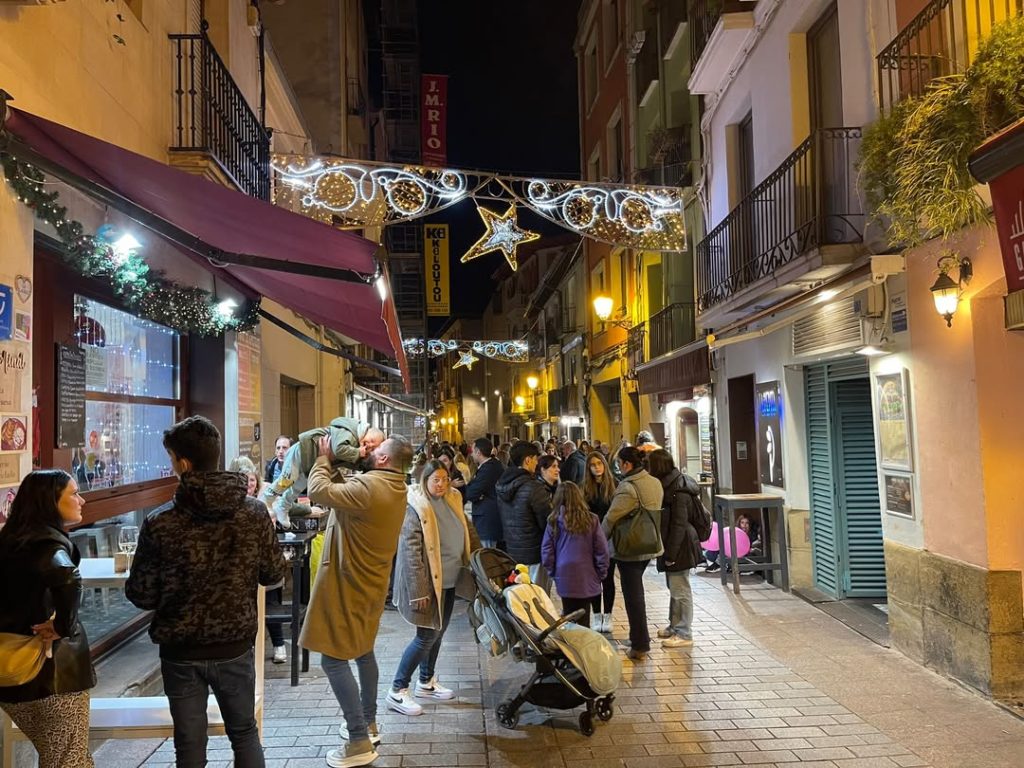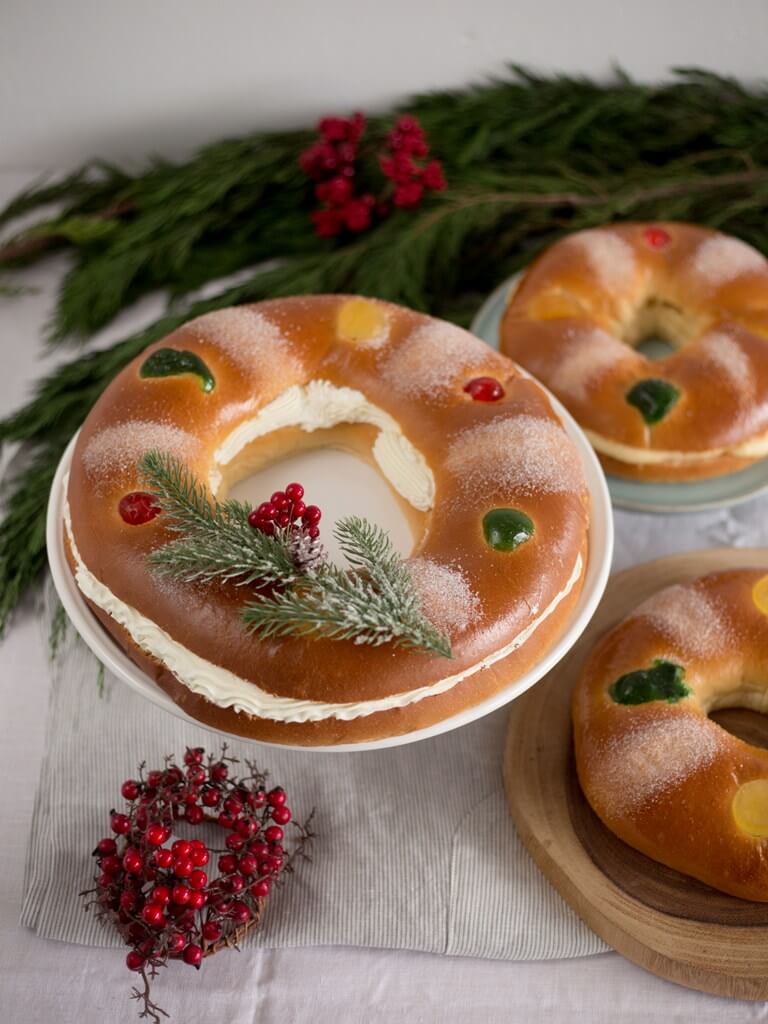In Spain the holiday season is a marathon that lasts a month, from December 8- the Feast of the Immaculate Conception – to Epiphany on January 6.
During the holidays we don’t hold back. Celebrations include company lunches and dinners, drinks and meals with friends and of course, traditional family feasts on Christmas Eve, Christmas Day, New Year’s Eve, New Year’s Day, the evening of January 5 and lunch on January 6.
Bars and restaurants are always full as people cast their diets aside. December is a make-or-break time of year for wine sales, especially sparkling wine, and consumers do their best to help.
Wine, of course, is an integral part of our lifestyle. During the holiday season we scour our wine cellars and local wine shops to choose the best wines to enjoy with these special meals. Here, Rioja is naturally the name of the game but we also enjoy an increasing range of whites – txakoli – from the Basque Country.
We can choose between dry, semidry and sweet whites, rosés and reds, from the latest vintage to treasures from the past. We can enjoy blends of different grape varieties, wines made from one variety, traditional method sparkling wines, including those made under the rules of the Rioja DOCa designation, wines from a specific village or region and our most recent creation – wines made from certified old vines. In Rioja our wide range of wines can be paired with any dish.

Christmas in Logroño, Rioja. Photo: Calle Laurel Association (IG).
My family’s holiday celebrations
A typical Christmas Eve menu in our house, which is, I believe, representative of holiday meals in the Basque Country and La Rioja usually consists of:
- enjoying a glass or two of white or bubbly while we’re in the kitchen preparing the meal;
- some small dishes such as prawns, pâté and cheese. Some families prefer larger shellfish such as lobster or spider crab, paired with a young white, rosé or bubbly;
- fish or seafood soup;
- broiled sea bass or sea bream with potatoes, paired with a barrel fermented or barrel aged white;
- a special dessert that my wife makes with slices of fresh pineapple on which she pours a little Grand Marnier, Cointreau or kirsch;
- Turrón (nougat) and marzipan.
On Christmas Day we usually roast a leg of lamb and potatoes, with which we have an aged red Rioja.
New Year’s Eve is extra special because it’s our son’s birthday. With dinner we usually open a bottle or two of a top rioja. At the stroke of midnight we eat twelve grapes along with the tolling of the twelve bells in the Puerta del Sol in Madrid.
On New Year’s Day we always have a huge meal of pasta that a different member of the family makes each year, along with a good rioja reserva.
On the evening of January 5 we go downtown for the parade featuring the Three Wise Men who pass out candy to the children who line the streets, after which we enjoy tapas-hopping.
Gift-giving traditions
Here in Spain there are several characters who deliver presents, according to each family’s tradition.
The Olentzero
In the Basque Country it’s the ‘olentzero’, the legendary man who delivered coal to homes and in modern times brings gifts to children.
Historians say that the origin of the ‘olentzero’ precedes the Christianization of Navarra. The man supposedly represented a figure who would appear about the time of the winter solstice in December – to celebrate leaving the past year behind and the lengthening of the days which represented the hope of the upcoming year, Today olentzero appears in end-of-the-year parades in cities and towns in the Basque Country as a husky, pipe-smoking man dressed in typical Basque farmer’s clothes.
The Three Kings
Three Kings Day, or Epiphany, is a Christian celebration that commemorates the arrival of the three wise men Gaspar, Melchor and Balthazar to Bethlehem to present gifts to the baby Jesus. Many Spanish families open gifts on January 6, following this tradition.
Papá Noel
This rotund figure dressed in a red suit and white-tasseled red hat who drives a sleigh pulled by twelve reindeer is none other than Santa Claus, or St. Nicholas. He delivers gifts the night of December 24.
Papá Noel is not a traditional figure in Spain. His influence, however, is growing because of the influence of TV and advertising in department stores.
Relief as the holidays end on January 6
Our month-long celebrations end on January 6 after we enjoy the last of our annual holiday meals. Spanish tradition is to serve a ‘roscón’ for dessert. Roscón is a round pastry filled with either whipped cream or merengue with a bean and a small plastic figurine inside.
The person whose slice contains the bean has to pay for the roscón while the person receiving the figurine is the king or queen for the day and wears a colored cardboard crown.

Roscón de Reyes from Martina de Zuricalday in Bilbao. Photo: Martina de Zuricalday Pastry Shop.
We pay for our excesses
Roscón is the last calorie-filled treat to remind us of the excesses of the past month. After a last glass of wine and slice of roscón, we breathe a sigh of relief. We promise to follow our New Year’s resolutions which inevitably include going back to the gym and giving up wine for the month.
Experts from the European Medical Institute of Obesity reckon that each Spaniard will gain between two and five kilograms (4,4 and 11 pounds) over the holidays.
January in Spain is called ‘la cuesta de enero’ (the January slope), a hard climb because we’ve put on weight and our bank balances are low. We have to return to our usual routine but take time, if we have any money left, to go shopping starting on the seventh, the day the January sales start.
Text by Tom Perry, Inside Rioja
Featured photo: Bilbao City Council. Olentzero and Mari Domingi receive the children in Bilbao.
Learn more about Bilbao-Rioja Great Wine Capitals